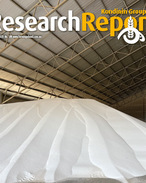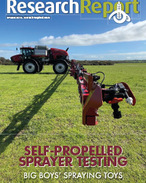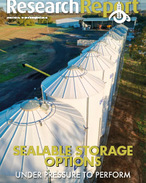This article is 3 years old. Images might not display.
Strike Energy Ltd has begun drilling the SE1 well near Eneabba at its wholly-owned South Erregulla prospect and is already down to 1045m in depth at the first section of the hole.
SE1 is expected to encounter Kingia sandstone, a band of soft rock containing porous sand reservoirs charged with natural gas and water in the North Perth Basin that was discovered in 2014, at a revised depth of 4369m, Strike Energy told the Australian Security Exchange (ASX).
This is up to 200m shallower than gas-producing drilling penetration of Kingia sandstone at the West Erregulla 2 well in 2019, less than five kilometres from where SE1 is being drilled.
"SE1 is being drilled with a further optimised design in order to ensure the well conditions when drilling and coring through the primary objective in the Kingia Sandstone are maximised for reservoir preservation and data acquisition," Strike Energy said.
"The primary objective of SE1 is to delineate approximately 350 petajoules of high confidence resource in order to secure the gas requirements for Project Haber, Strike's proposed Geraldton based 1.4 million tonnes per annum urea fertiliser manufacturing facility.
"This amount of gas feedstock should allow the company to progress the project banking and equity processes with sufficient gas to cover the proposed tenor of any debt facilities as identified in the recently completed Strategic Roadmap prepared for Strike by ANZ Bank and Azure Capital.
"On confirmation of success at SE1, Strike will look to sanction additional detailed engineering (Front End Engineering Design, FEED), finalise the urea offtake and progress the equity-debt processes for Project Haber," Strike Energy said.
At full production the proposed Project Haber plant located in an industrial area of Geraldton could theoretically supply 74 per cent of Australia's 1.9 million tonnes of fertiliser currently used annually, most of which is imported from China, Russia and Egypt.
Synthetic urea comprises 46 per cent nitrogen and is the most popular nitrogen fertiliser used in Australia.
Cheap natural gas is said to be the key to urea manufacturing, it represents about 70 per cent of cost of production and is why Project Haber hinges on the success of Strike's South Erregulla gas project finding sufficient gas to be piped about 125km to Geraldton.
Synthetic urea is manufactured by reacting natural gas, atmospheric nitrogen and water together at high temperature and pressure to produce ammonia and carbon dioxide.
These gases are reacted again at high temperature and pressure to produce molten urea which is cooled and processed into prills as fertiliser and for industrial use.
In December through the Supply Chain Resilience Initiative, the Federal government awarded Strike Energy a $2 million matched grant to help fund Project Haber and the State government awarded the project ‘lead agency' status.























